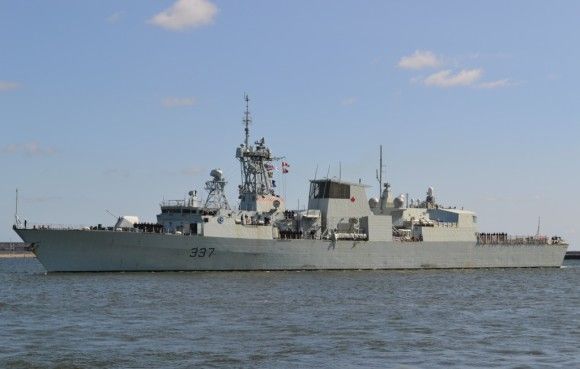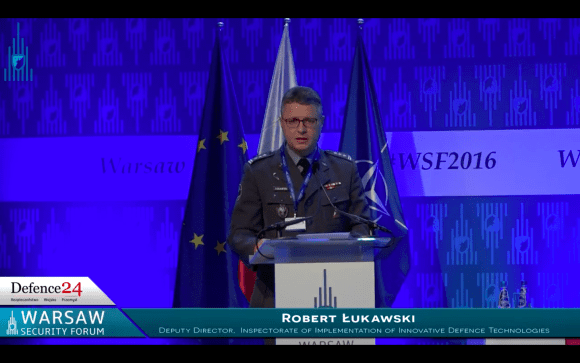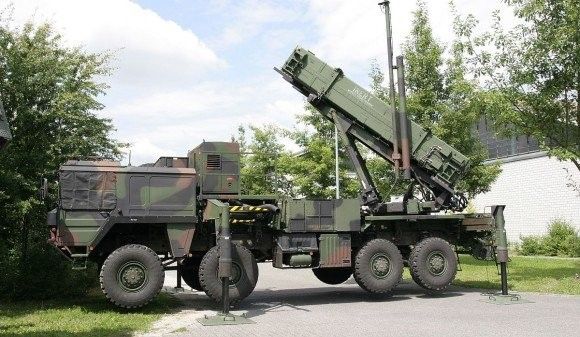Kormoran Minehunter Communications Suite: A Model Solution for the New Vessels of the Polish Navy?
Polish KenBIT company has developed an integrated communications suite for the Kormoran II mine countermeasures vessel. The capabilities provided by the company make it possible to secure the needs of the prospective Polish Navy vessels, when it comes to communications and radio connectivity. The representatives of the company stress the fact that whether the new solutions would be utilized or not, remains dependent on decision whether new ships would be procured.
KenBIT has prepared a full, integrated communications suite for the Kormoran II class vessel. The solution includes, among other elements: external communications subsystem, internal communications subsystem, alert system: mechanical and electronic access control for the zone 1 rooms (radio and cryptographic room), CCTV subsystem and non-combat IT networks. Back in the past, solutions offered by the company were also being implemented in case of the ORP „Resko”, ORP „Dąbie”, ORP „Flaming”, ORP „Mewa”, ORP „Czajka” mine countermeasure platforms, as well as in case of the ORP “Kraków” vessel.
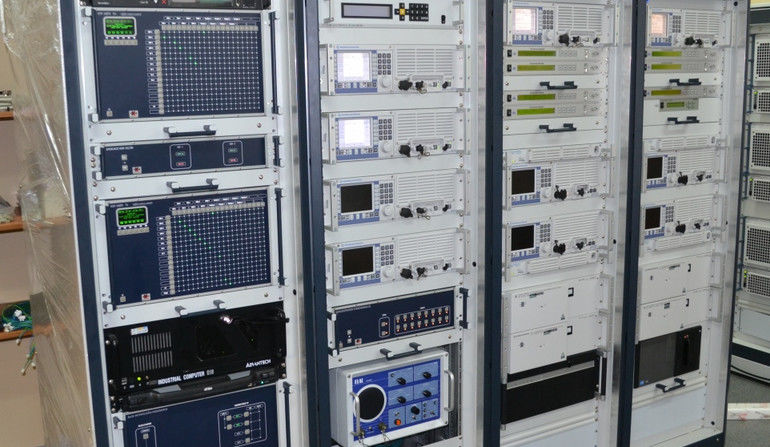
Neptun Integrated Vessel External Communications Suite – Applied in Case of Kormoran Minehunter
The task completed by KenBIT, in case of the “Kormcoran” vessel, has been quite convoluted, not only did it concern design and construction of an external communications suite, as intercom was also a subject of the undertaken works. In case of the vessel’s integrated communications suite, also known as OZSŁ, the main emphasis was placed on securing of the secure and non-secure (NATO or national systems) radio communication, taking place simultaneously and involving land based stations, other vessels and aircraft (in case of connectivity based on telephone, teletype and through a data link).
Meanwhile, the system for internal communications has been designed with a purpose of providing communication between the internal, individual elements of the vessel’s organizational structure - primarily between the battle-stations and between the crew-members.
Within the framework of the Neptun (Neptune) Integrated Communications Suite, the following elements have been interconnected and synchronized: typical devices for radio and satellite communications, antenna systems, commutators, interfaces, modems, encryption modules, terminals, computers controlling the system and recording the radio communications, communication panels and an emergency power system. Thanks to the above, the operator establishing the communication link does not have to be aware of the way, in which that link is established and via which radio the connection takes place. He only “sees” the portable communications panels, with networks and communication directions outlined. He also may handle the data transfer terminals. Whereas every element of the aforesaid process needs to take place in a covert and reliable manner.
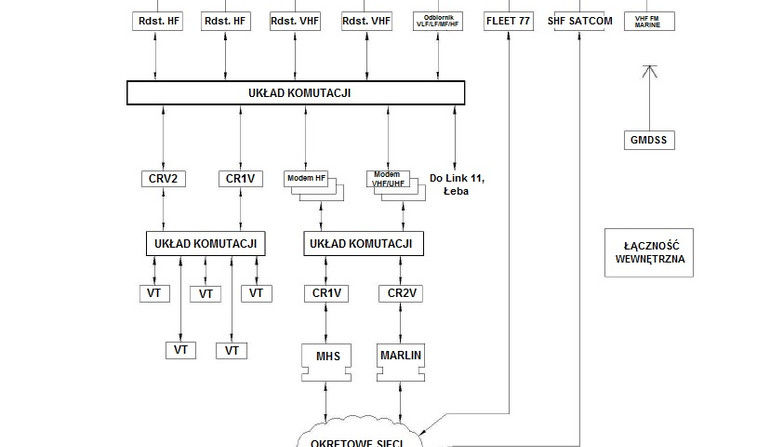
Thanks to its modular structure, the system may be configured for any vessel, as it may be fused with a wide variety of audio and digital communication terminals. Thus, the suite may just as well be implemented in the course of the Miecznik (coastal defence vessel), Czapla (patrol vessel with minehunting capabilities) and Orka (submarine) programmes.
In order to configure a system proper for the given platform, it is enough to get rid or add relevant elements and auxiliary devices (e.g. interfaces), all embedded within standard 19” Rack cabinets, or outside them, however, in the latter case proper shock absorbing systems shall be applied, to secure the elements of the suite. The system has been created on the basis of open architecture, thanks to which both specific communication solutions indicated by the Ordering Party, as well as the KenBIT-offered elements, may be applied and introduced, including elements that were independently developed and created by the said company in Poland, using the knowledge and expertise of the Polish engineers working at the Polish defence industry facilities.
For example, in case of the “Kormoran II” mine countermeasures vessel, a Link 11 tactical data-link has not been provided by KenBIT. However, the company declares that it is fully ready to prepare this system and fully integrate it within the vessel communications suite. The delivery may include, e.g. hardware proposed by the Yagal company, the architecture of which is based on a Universal Link System. Thanks to the above, a single console of the suite may interconnect the capabilities of Link 11, Link 16 and Link 22 systems (with the latter one to be implemented in the future).
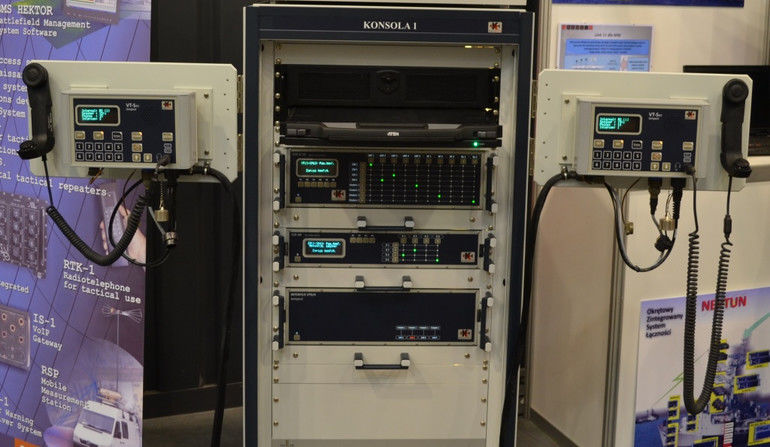
Elements used by KenBIT to Create the OZSŁ Neptun Suite
The standard OSŁZ Neptun suite (Vessel External Communications System), manufactured by KenBIT, features three, distinctly separate subsystems:
- Vessel's radio measures (radios, radio receivers, interfaces tailoring the commutation arrangement for the radios, interfaces, modems, encryption modules);
- Datalinks (radio modems, BLACK side data commutator, cryptographic systems, MHS server and interfaces (Message Handling System), conforming with ACP 127 and STANAG 5066 standards, and MHS terminals;
- And audio communication systems, with speech encryption devices.
According to the declarations made by the KenBIT company, the basic configuration may be further expanded with satellite communications subsystems (e.g. SHF SATCOM), IT networks and fast data links (Subnet Relay Channels), or other, similar solutions delivered by a Polish company. Neptun may also be provided with a remote control system and a message recording solution.
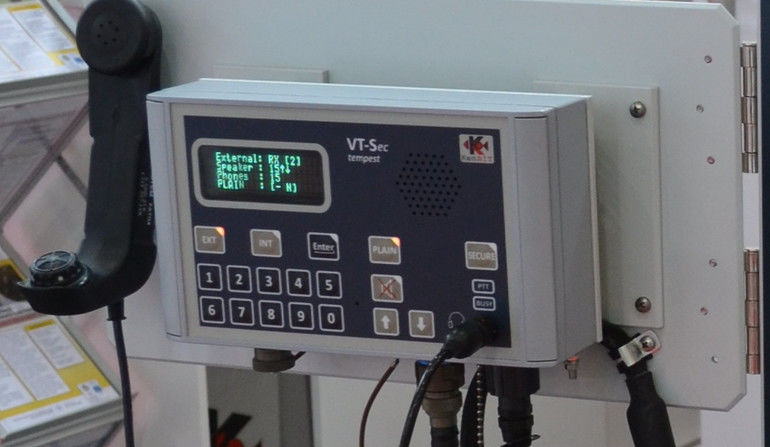
Neptun system, in general (with exclusion of the internal communications suite, VHF radios and “civil” subsystems as required by the GMDSS international regulations) includes the following components:
- Antenna system;
- HF/VHF/UHF maritime communication systems;
- Radio modems;
- Encryption and secure voice devices;
- Commutation suite;
- Ship’s Subsystem for Remote Control and Configuration of the Communications Suite - OCTOPUS;
- User terminals (audio, data-links);
- Satellite terminals (SATCOM, Inmarsat);
- MHS Pigeon Server - a part of the data transfer subsystem;
- MARLIN Subsystem (Mobile Ad Hoc Relay Line-Of-Site IP Networking - STANAG 4691) – part of the datalink;
- ICT networks, as a medium for the data-links - not acting as an element of the communications suite;
Majority of the devices that may be used for the purpose of establishing communications and integrating the individual elements of the Neptun suite has been developed and created by the KenBIT company. This may make it easier to tailor this hardware to the needs of the given ship later on, with the use of the very same, domestically developed equipment suite. Depending on the class of the ship, the number of the individual elements may vary, since it would be largely determined by the job ascribed to the communications suite.
Neptun establishes a link with the external receivers/transmitters via an antenna system, individually designed and created by KenBIT, depending on the class of the ship and the number of devices that are included in the Neptun suite. The antennas are directly connected to the radios, or via, in case of the receivers, antenna commutators.
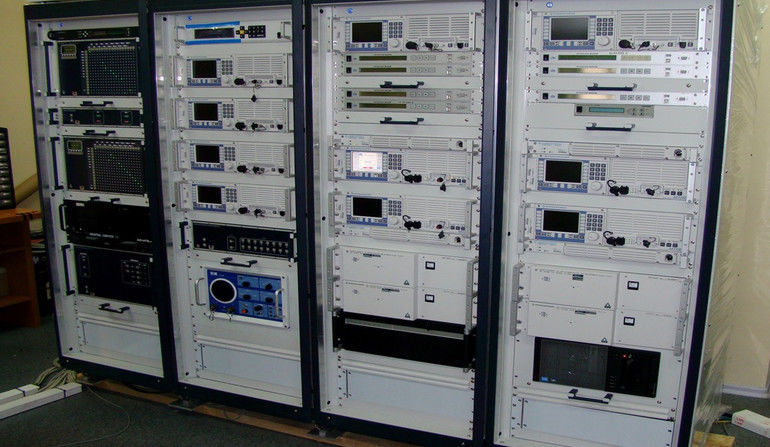
Most of the radio communication devices that are a part of the OZSŁ system have been arranged in 19 inch rack cabinets. Commutators and interfaces developed by KenBIT for all of the Polish Navy communication and encryption systems are altogether placed alongside.
Audio Communication Subsystem
Audio Communication Subsystem makes it possible to fuse the audio communications channel with the use of secure voice devices and ascribed (through the commutator array) HF or VHF/UHF radios.
VT-Sec terminals play the role of the element which connects the OZSŁ audio communication system directly with the user. The number of the aforesaid terminals is dependent on the class and size of the vessel. The said elements are arranged around the ship, in the user-indicated locations, above all within the Combat Information Centre and on the bridge. VT-Sec terminals may be used as the intercom, establishing the internal communications between the remaining users of the system. However, their primary role is to provide the following:
- Maintaining PLAIN non-secure audio communications, used e.g. when communication links are being established;
- Maintaining SECURE radio communications, with the use of secure voice devices, making it possible to safely transfer the information (in such case, the data belongs to so called “Red” zone).
In case of the plain communications, narrow-band channel in the basic acoustic band is used, around the 3 kHz frequency range (HF, VHF, UHF). In case of the SECURE operation in the VHF/UHF bands, broadband emission is used (16 kbps), which requires radios that would be tailored to transfer such data streams.
The terminals are very versatile, as they may also be coupled with secure voice systems in case when no need emerges to apply an integrated suite. They are used as a portable point, allowing the user to transmit, receive and change the communications mode (secure and non-secure) of the coupled device and of the radio.
VT-Sec terminals are connected to the Integrated External Communications system through the VTS interfaces. Here we are referring to autonomous devices integrating the individual elements of the whole vessel communications suite and tailoring their signal compatibility, between the audio and data-link devices.
Thanks to the above, the integrated communications suite may include a variety of components, defined by the Ordering Party, including radios, cryptographic elements, terminals, by connecting them to the existing systems, such as the intercom or LAN elements. KenBIT proposes a number of interfaces, depending on the level of the system’s complexity, offered in a number of variants: VTS 4, VTS 8 and VTS 20, allowing the user to implement, respectively, 4, 8 or 20 VT-Sec terminals. Should it be required to make use of more terminals, the interfaces may be interconnected and arranged in sections.
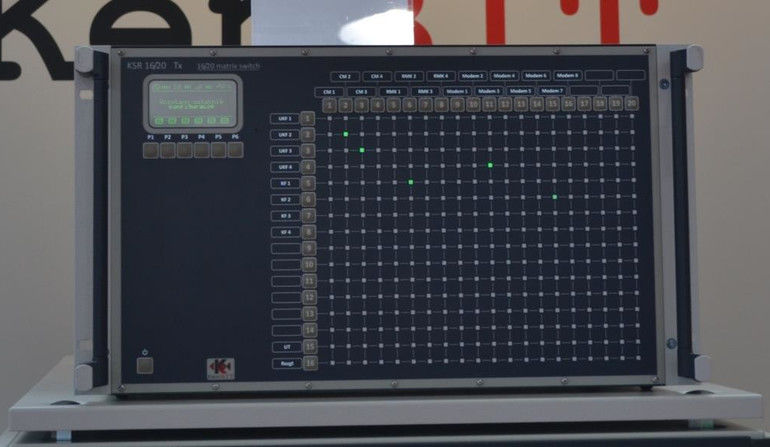
VTS interfaces also act as media converters (optical fibre-copper), and integrating elements for the internal communications, they also couple the VT-Sec terminals embedded within the ship with the commutation system. Commutators remain at the core of the suite. Not only should they map the hardware configuration, as they shall also allow the user to modify the said configuration. Their job is to assign proper radio means, modems and encryption devices to the given terminal. The change of the commutator settings is implemented by pushing the buttons of the proper commutation fields, nonetheless it is also possible to store frequently used configurations within the commutator memory, and to recall them with a single push of a button.
Optionally, an option exists to remotely reconfigure all of the devices within the Neptune system, via a GUI installed on the managing computer. KenBIT company offers standard and TEMPEST-compliant commutators. Depending on the number of the interconnected terminals and means of the radio communication, the following types of commutators are being offered: KSR 4x4, KSR 8x10, KSR 6x20 and KSR 16x20.
The aforesaid core components of the OZSŁ system are complemented with so called complementary elements, including devices that record, archive and playback the radio communications, and main and reserve power-supply system. Moreover, encryption suite simulators have been developed, making it possible to test the operation of the Neptun system in conjunction with the encryption suite, before the system was even delivered by the Ordering Party (within a separate procedure).
KenBIT Systems Security
All of the above is arranged with a distinct separation of the BLACK (non-secure) and RED (secure) sections. The solutions offered by KenBIT make it possible to use the communications suite within a NATO SECRET network, also in case of the system the configuration of which exhibits a much higher level of complexity. Thanks to the above, these sections play a role of a component of the ship’s NS-LAN network which may be embedded within the secure NATO NS-WAN.
In order to achieve this goal, the audio communications system is fitted with secure-voice devices, RED commutators, OPTO VTS interface and with the VT-Sec audio terminals. According to the company, all of the subsystems the purpose of which is to process the secure information feature separate channels - national or allied ones. Besides the above, TEMPEST technology is used, which is to make it possible to meet the secure data protection requirements.
Even though the audio communications subsystem is, according to the terminology applied, designed to process the data securely (RED section), should the given terminal be operated without the encryption module active, the aforesaid component becomes a part of the BLACK portion of the suite. The system has been designed in a way which makes every virtual communications channel connecting the audio terminal, commutation system and the speech securing device, a separate transmission route. This is to ensure that it remains impossible to physically or logically connect it to other paths within the subsystem.
Data Transfer Subsystems
The data transfer subsystems make it possible to utilize the ship’s radio systems to transfer the information in a form of data (e.g. via the MHS PIGEON server - ACP-127 text messages, STANAG 5066 e-mails), or when used as a transfer medium for the LAN systems (STANAG 4691 MARLIN).
In case when text messages are being sent, in line with the ACP-127 protocol (e.g. TADPOLE or NATO BROADCAST), the whole transmission takes place via the ship’s radio suite. MHS PIGEON, the Ship’s System for Editing and Transmitting the Messages (OSETW) acts as the basic building block of the vessel data transfer system. The task ascribed to the aforesaid element is to provide a proper circulation of messages onboard, allowing many users to edit the said message, and to transfer the information within the framework of NATO interoperational cooperation. The system also makes it possible to utilize a Chat function, acts as an e-mail client and as an interface for the external components, rendering the user able to transmit and receive messages compliant with the ACP 127 document.
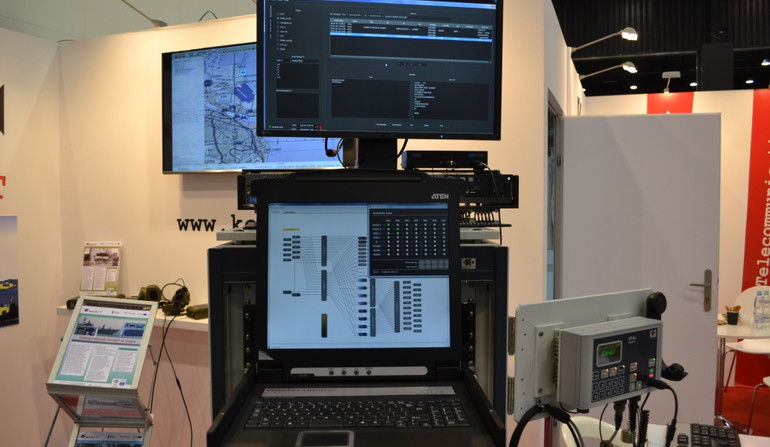
MHS Pigeon features 16 asynchronous and 4 synchronous data transfer ports, with an ability to connect modems, cryptographic devices or radios. MHS Interface plays a role of the core element of the PIGEON suite; it includes numerous specialized applications launched within PC terminals used by the officers (MHS Messenger, MHS Configurator, MHS Chat and E-mail). The hardware platform arrangement is compliant with the TEMPEST norms.
In case when e-mail messages are sent, they are directed towards the interface relevant for the given context, depending on the availability of the recipient, through the IP network, or through the radio system. In the latter case, the data goes through a synchronous serial port, connected to an encryption device coupled, through a radio modem and commutation system, with the selected HF radio. If the addressee is, on the other hand, reachable through the IP network, the data is directed towards a relevant networking interface (Ethernet, in most cases), and transferred via the VHF/UHF band, through a subsystem compliant with the STANAG 4691 MARLIN (Mobile Ad hoc Relay IP Network) norm, or via a satellite link.
Satellite Communications
Commercially available Inmarsat terminal is the basic satellite system, usually installed on ships. At the moment, the above is formed by a FleetBroadband system, providing both telephone communication (secure STU/TCE500 telephone or non-secure communication), as well as data transfer (ISDN interface, up to 128 kbps).
Larger vessels are additionally fitted with a SATCOM terminal. The said system is acting as a satellite communications terminal, making it possible to establish a connection via any type of satellite (in most cases - geostationary), within a frequency range arranged with the provider of the satellite services (Ku band), or within the frequencies assigned by NATO (usually: X-band).
Ship’s Intercom System
The SŁW internal communications suite is to serve a purpose of interconnecting the battlestations (communications between the individual ports takes place over the Ethernet), for the purpose of issuing commands and announcements within the ship and on the open decks.
Moreover, four subsystems as follows may also be distinguished:
- Subsystem for bidirectional loudspeaker and wireless communications (T-B);
- PA and general alerts subsystem;
- VSP Battery-less phone subsystem;
- PABX Phone communication subsystem.
In order to make it possible for SŁW to act as the general ship’s PA system, a proper loudspeaker suite is installed on-board, in a form of zone-arranged speaker lines. The above solution makes it possible to transfer messages solely to the selected section of the ship. Moreover, the system is also coupled with the alerts suite, with those messages disseminated throughout the whole ship.
OZSŁ Neptun - System Management
OCTOPUS subsystem for remote control and configuration constitutes an element which supports the NEPTUN system administrator. This is the main control element for the ship’s internal and radio communication suites. The said component allows for easy configuration of the audio communications suite and visualizes the commutation and status of the system, within which the individual devices are embedded.
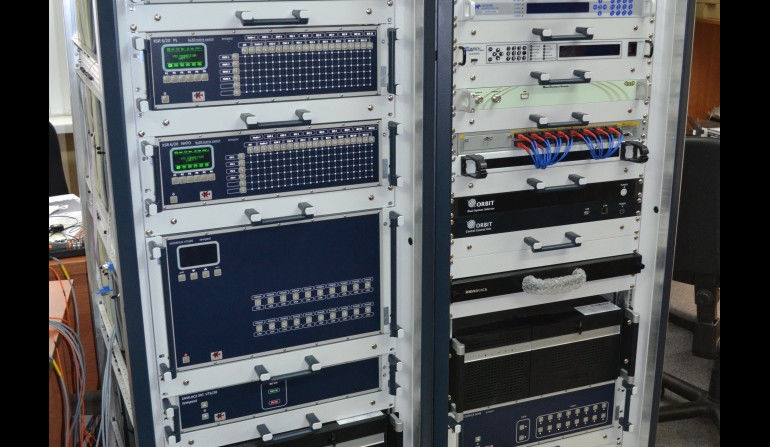
Visualized system architecture is presented as a schematic which may be zoomed in and out, within which both the devices (with status messages and ports available) as well as the connections between them are displayed. Thanks to the above solution, the system administrator may easily find out its operating principle, and subsequently detect the potential faults.
Moreover, there is also an option to monitor the configuration of all of the audio connections and data transmission between the terminal devices and intermediary devices, since the logic architecture of the communications suite is visualized on the displays as well (along with the internal commutator-based connections and with the physical connections taken into account).
Furthermore, an option exists to reconfigure the whole communications suite, with the use of pre-arranged and recorded scenarios. For that purpose, so called configuration forms are utilized, ascribed to the individual devices and making it possible to set several or al parameters, both within the scope referring to the individual devices, as well as to the general commutation status. It is a scalable and versatile suite which may be tailored for the purpose of being used onboard a variety of vessels, utilizing any hardware configuration.
The main, central element of the OCTOPUS solution is the SŁ control hub, acting as the server for the system fitted with 16 asynchronous (RS-232 and RS-422) ports, as well as an optical TCP/IP port.
Not only is the maritime department of the KenBIT company capable of manufacturing single models of radios in Poland, but it also remains in possession of an ability to design and create integrated internal and external communication suites, CCTV systems, access control systems and IT networks for the maritime applications. In case of such solution, often it remains required to fuse a variety of kinds and types of radio equipment, utilized by the Navy, provided by companies such as Rohde Schwarz, Sailor, Harris, Rockwell Collins and OBR CTM. KenBIT company has prepared itself for that, through development of proper technologies, hardware and software. As it had been shown, these are already implemented in case of the Polish Navy vessels.
The solutions proposed by KenBIT constitute a proof that the industry remains in possession of an ability to meet the requirements of the Polish Armed forces also in domains that are very demanding. The representatives of the company emphasize the fact that this is related to an emerging need to conduct continuous research, make equipment-related investments, and maintain human resources who possess expertise in domains that are very specialized. The KenBIT’s officials note that the delays concerning the construction works related to the new vessels for the Polish Navy place the industry in a difficult position, since maintaining a system that would make it possible to develop and deliver similar solutions without receiving any orders is, at least, problematic. This, consequently, may lead to losing of the potential that had been established, and, to some extent, used by the Navy.
The above article has been written on the basis of the materials provided by the KenBIT company experts, including the Maciej Czaplinski’s paper: NEPTUN - Integrated Communications System for the Polish Navy Vessels.

